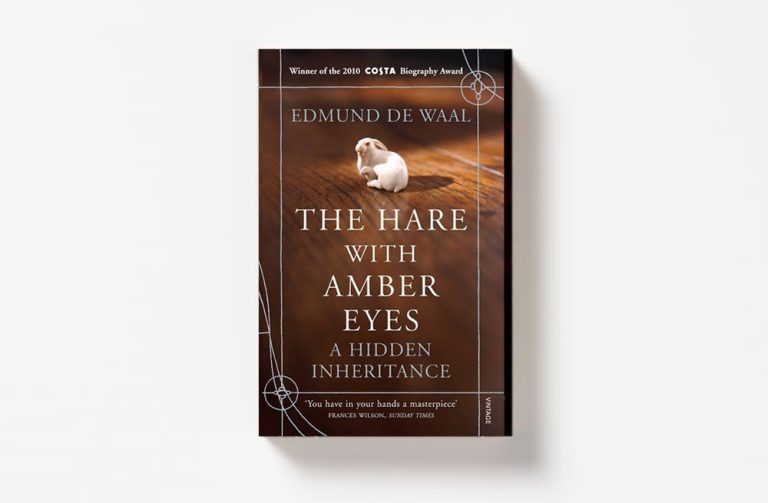Published by: Farrar, Straus and Giroux
The Hare with Amber Eyes tells the story of the author’s family and traces the journey of 264 netsuke (Japanese miniature sculptures) from war-torn Europe to Japan. Edmund de Waal is a British ceramicist, descended from the Ephrussis—a prominent, affluent European-Jewish family. The Ephrussis had their beginnings in Odessa, from where they spread out across Europe, primarily settling in Paris and Vienna. At the height of their power, they rivalled other influential European families, such as the Rothschilds.
During a ceramics apprenticeship in Japan, the author stays with a beloved uncle who relocated there decades ago. Upon this uncle’s death he inherits a prized collection of intricately carved Japanese netsuke. From there, he begins his journey into the past, trying to uncover how these small sculptures left Japan in the first place, to become part of his ancestor Charles Ephrussi’s collection in Paris, eventually travelling to Vienna, before finding their resting place in Japan once again with his uncle.
We are immediately thrust into Belle Epoque Europe, with larger than life characters, patrons of art and culture. De Waal deftly—and with meticulous research—explores the founding of his ancestors’ companies, the accumulation of their wealth and their crucial role as cultural tastemakers, in beautiful prose. They rub shoulders with artists and writers who later became the greatest minds of the twentieth century—in fact Charles Ephrussi (the one who collected the netsuke in the first place) is said to have inspired characters in Proust’s Swann’s Way.
Before we re-live the horrors of the two World Wars and how they diminished the fortunes of the Ephrussis, we are treated to art and trade history and the changing tastes of the European elite at a time when the world was opening up. Once we learn how the netsuke survived the ransacking of the Ephrussi Palace in Vienna, it is almost impossible to believe this is a true story.
Family memoirs and historical non-fiction can be unwieldy and dense. However, de Waal’s superb command over his lyrical prose and depth of research combine to bring this fantastical tale to life in a compelling manner. It was hard to put this book down for even one second.



